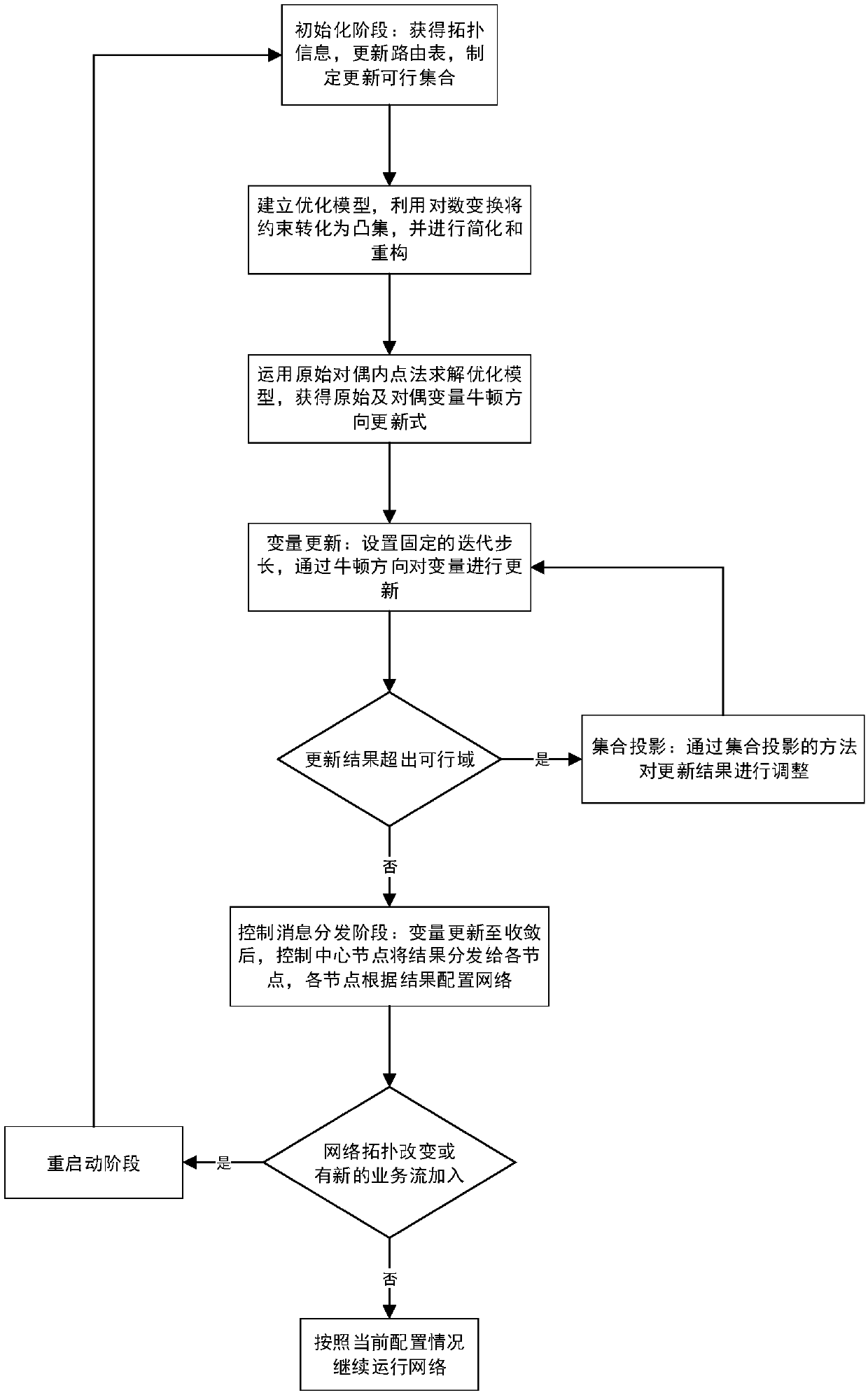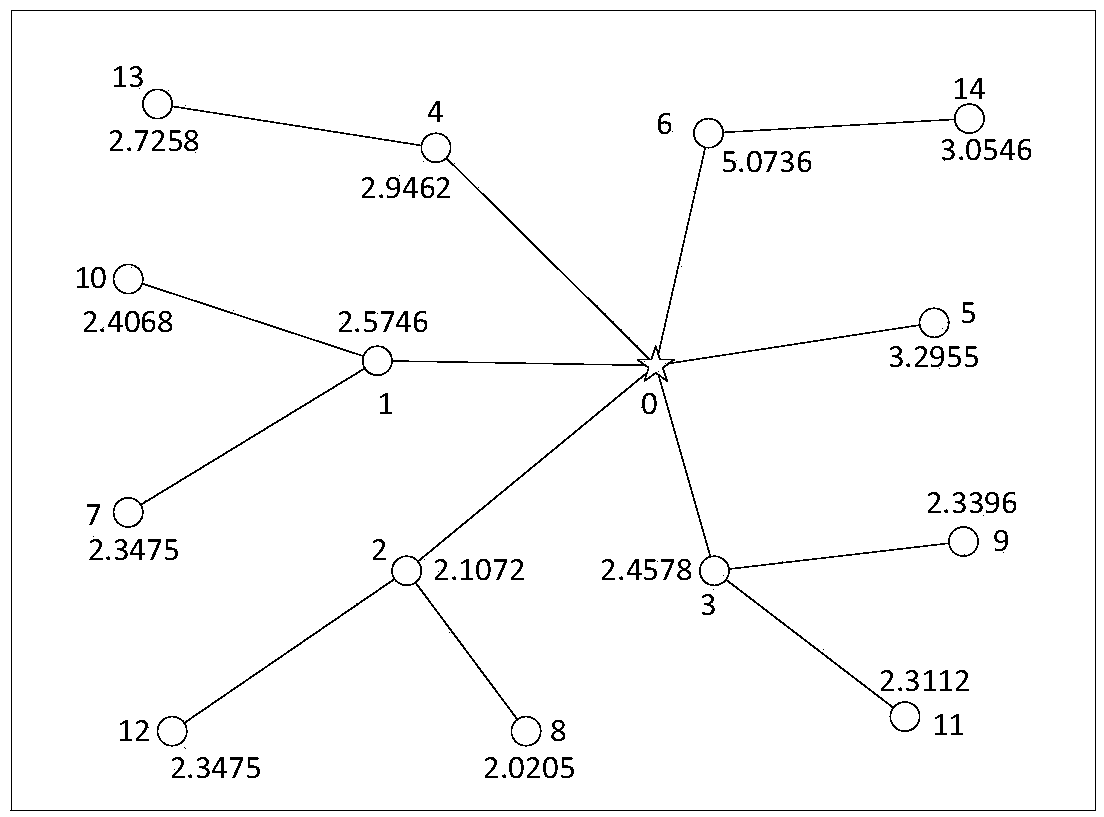Second-order method for united congestion control and power distribution of interference-limited wireless multi-hop network
A wireless multi-hop network, congestion control technology, applied in the field of wireless multi-hop network joint congestion control and power allocation, can solve the problem of not considering physical layer power allocation and so on
- Summary
- Abstract
- Description
- Claims
- Application Information
AI Technical Summary
Problems solved by technology
Method used
Image
Examples
Embodiment Construction
[0070] Embodiments of the present invention will be described in detail below in conjunction with the accompanying drawings.
[0071] Such as figure 1 As shown, the second-order method for joint congestion control and power allocation of the interference-limited wireless multi-hop network described in the present invention comprises the following steps:
[0072] S1: Initialization stage: the control center node obtains the topology information of the network through the exchange of periodic "Hello" messages, and periodically updates the network routing table according to the shortest path routing algorithm; the control center node periodically collects the information of all nodes in the network Basic configuration information, including channel state information, whether the source node of the service flow and the upper bound of node power, etc., formulate a feasible set of service flow rate and link power update.
[0073] The present invention considers a simple wireless mu...
PUM
 Login to View More
Login to View More Abstract
Description
Claims
Application Information
 Login to View More
Login to View More - Generate Ideas
- Intellectual Property
- Life Sciences
- Materials
- Tech Scout
- Unparalleled Data Quality
- Higher Quality Content
- 60% Fewer Hallucinations
Browse by: Latest US Patents, China's latest patents, Technical Efficacy Thesaurus, Application Domain, Technology Topic, Popular Technical Reports.
© 2025 PatSnap. All rights reserved.Legal|Privacy policy|Modern Slavery Act Transparency Statement|Sitemap|About US| Contact US: help@patsnap.com



